Fig shows a uniform cylinder of radius a weight 75N. After on off axis cylindrical hole was drilled through it as shown, it weighed 60N. The axes of the two cylinders are parallel. Assuming the cyliner does not slip on the table, determine what the tension T in the cord must be to keep it from moving.
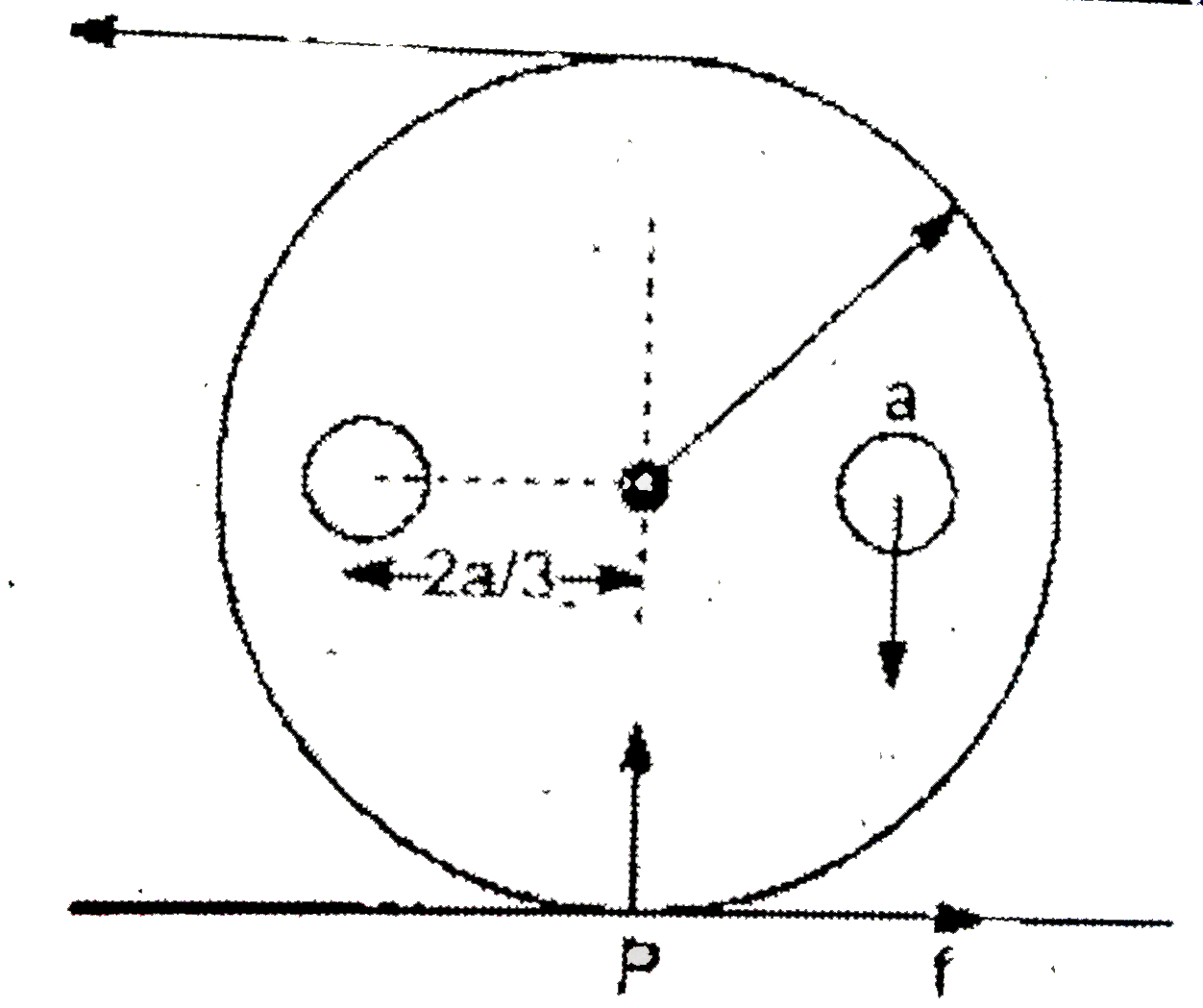
Step by step video & image solution for Fig shows a uniform cylinder of radius a weight 75N. After on off axis cylindrical hole was drilled through it as shown, it weighed 60N. The axes of the two cylinders are parallel. Assuming the cyliner does not slip on the table, determine what the tension T in the cord must be to keep it from moving. by Physics experts to help you in doubts & scoring excellent marks in Class 11 exams.
Topper's Solved these Questions
- BOOK - ANURAG MISHRACHAPTER - RIGID BODY MOTIONEXERCISE - SCQ_TYPE83videos
RIGID BODY MOTION
- BOOK - ANURAG MISHRACHAPTER - RIGID BODY MOTIONEXERCISE - MCQ_TYPE41videos
RIGID BODY MOTION
- BOOK - ANURAG MISHRACHAPTER - IMPULSE AND MOMENTUMEXERCISE - matching3videos
IMPULSE AND MOMENTUM
- BOOK - ANURAG MISHRACHAPTER - UNIT AND DIMENSIONSEXERCISE - Matching Type Problem4videos
UNIT AND DIMENSIONS
Similar Questions
Let's assume that the Tower of Pisa is a uniform hollow cylinder of radius R = 9.8 m and height h=60 m. The center of Mass is located at height h/2, along the cylinder's central axis. In Fig. 11-18a, the cylinder is upright. In Fig. 11-18b, it leans rightward (loward the tower's southern wall) by θ=5.5, which shifts the com by a distance d. Let's assume that the ground exerts only two forces on the tower. A normal force →FNL=0 acts on the left (northern) wall, and a normal force we acts on the right (southern) wall. By what percent does the magnitude Far increase because of the leaning?
View Solution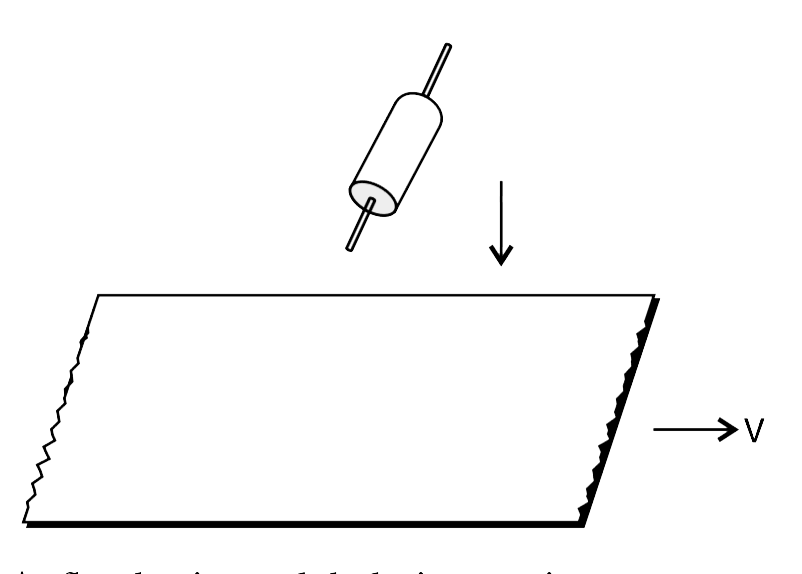
A flat horizontal belt is running at a constant speed V. There is a uniform solid cylinder of mass M which can rotate freely about an axle passing through its centre and parallel to its length. Holding the axle parallel to the width of the belt, the cylinder is lowered on to the belt. The cylinder begins to rotate about its axle and eventually stops slipping. The cylinder is, however, not allowed to move forward by keeping its axle fixed. Assume that the moment of inertia of the cylinder about its axle is 12MR2 where M is its mass and R its radius and also assume that the belt continues to move at constant speed. No vertical force is applied on the axle of the cylinder while holding it.
(a) Calculate the extra power that the motor driving the belt has to spend while the cylinder gains rotational speed. Assume coefficient of friction =μ.
(b) Prove that 50% of the extra work done by the motor after the cylinder is placed over it, is dissipated as heat due to friction between the belt and the cylinderView Solution
Knowledge Check
- Question 1 - Select One
A uniform cylinder of radius R originally had weight of 80N. It weigths 65N, after an off axis cylinderical hoole at 2R3 was drilled through n.
The axis of the two cylinders are parallel and at same height A force T is applied to the top of the cylinder horizontally to keep the cylinder at rest about the axis of the original cylinder passing through O. The value of force should be
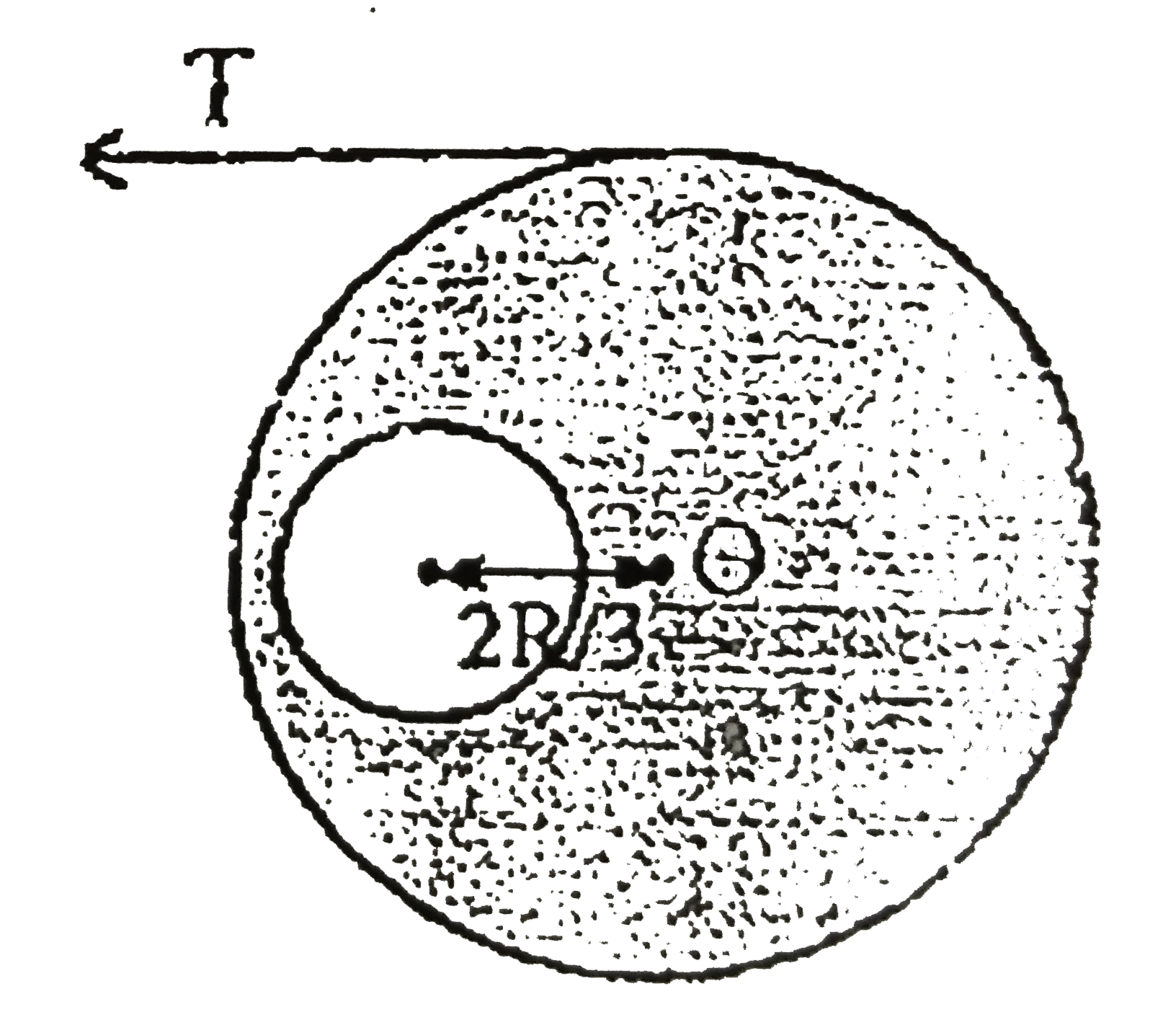 A1NB3NC5ND10N
A1NB3NC5ND10N - Question 2 - Select One or More
A transparent thin film of uniform thickness and refractive index n1=1.4 is coated on the convex spherical surface of radius R at one end of a long solid glass cylinder of refractive index n2=1.5, as shown in the figure. Rays of light parallel to the axis of the cylinder traversing through the film from air to glass get focused at distance f1 from the film, while rays of light traversing from glass to air get focused at distance f2 from the film, Then
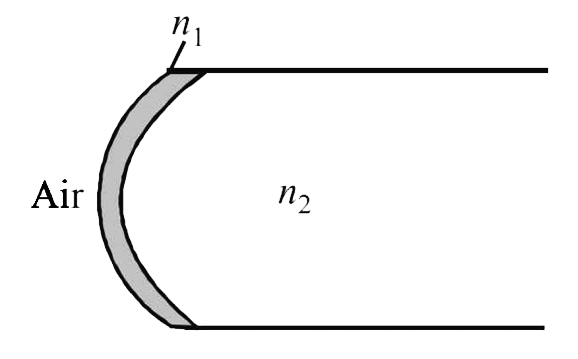 A|f1|=3RB|f1|=2.8RC|f2|=1.4RD|f2|=5.4R
A|f1|=3RB|f1|=2.8RC|f2|=1.4RD|f2|=5.4R
Two uniform solid cylinders, each of mass m = 10 kg and radius r = 150 mm, are connected by a rough belt as shown. If the system is released from rest, determine the velocity of the centre of cylinder A after it has moved through 1.2 m & the tension in the portion of the belt connecting the two cylinders.
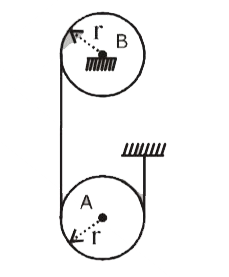 View Solution
View SolutionFigure shows two cylinders of raddi r1andr2 having moments of inertia I1andI2 about their respective axes. Initially the cylinders rotate about their axes with angular speed ω1andω2 as shown in the figure. The cylinders are moved closer to touch each other keeping the axes parallel. The cylinders first slipover each other at the contact but the slipping finally ceases due to the friction between them. Find the angular speeds of the sylinders after the slipping ceases.
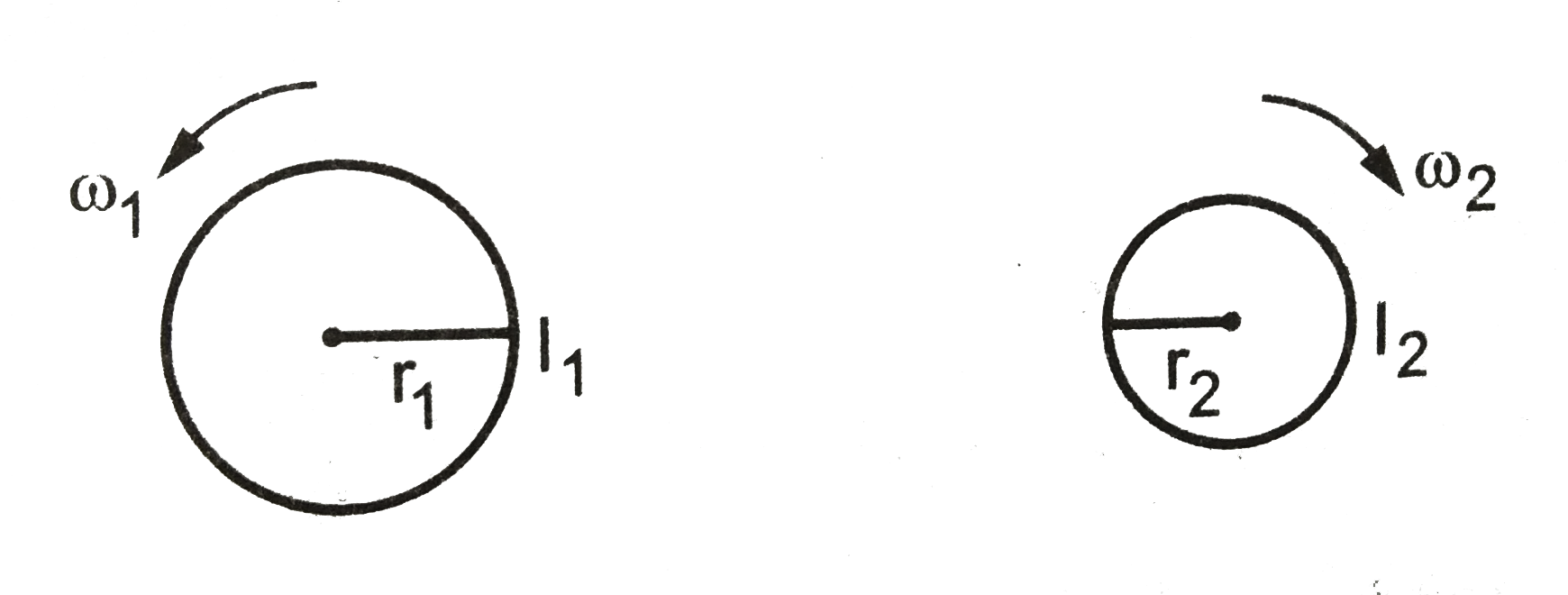 View Solution
View SolutionTwo uniform cylinders, each if mass m=10kg and radius r=150mm, are connected by a rought belt as shown. If the system is released from rest. Determine.
(a) the velocity of the centre of cylider A after it has moved through 1.2m and
(b) the tension in the portion of the belt connecting the two cylinders.
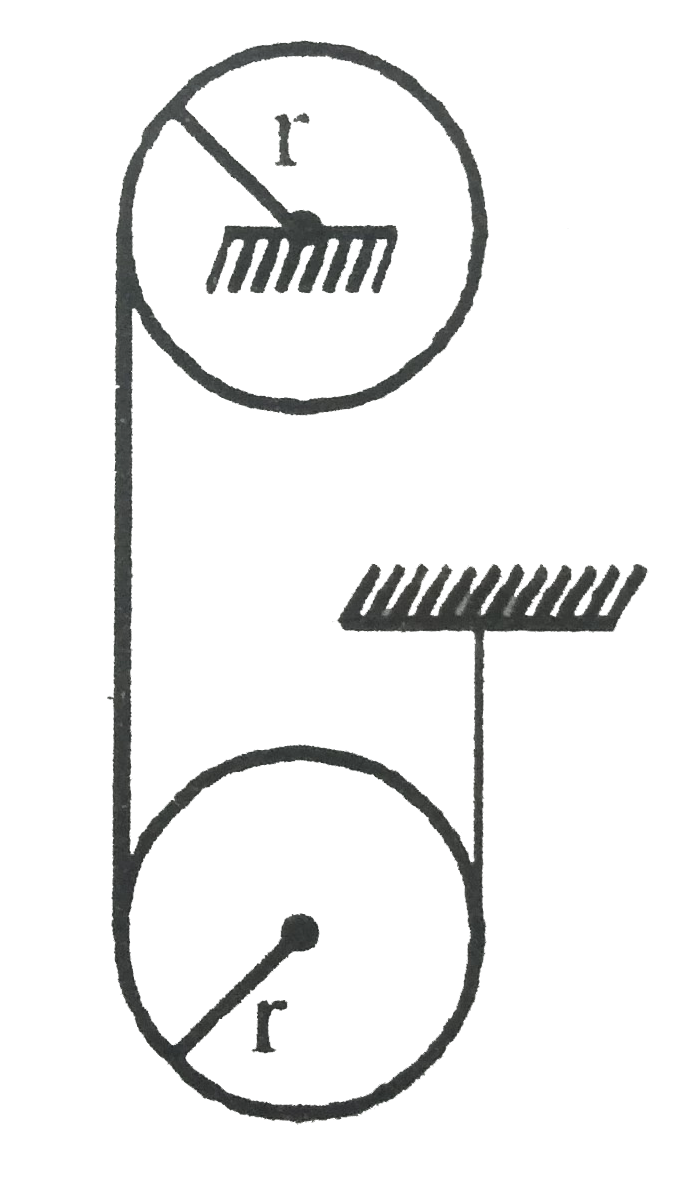 .View Solution
.View SolutionA cylindrical container of height 3L and cross sectional area A is fitted with a smooth movable piston of negligible weight. It contains an ideal diatomic gas. Under normal atmospheric pressure P0 the piston stays in equilibrium at a height L above the base of the container. The gas chamber is provided with a heater and a copper coil through which a cold liquid can be circulated to extract heat from the gas. Volume occupied by the heater and the liquid coil is negligible. Following set of operations are performed to take the gas through a cyclic process.
(1) Heater is switched on. At the same time a tap above the cylinder is opened. Water fills slowly in the container above the piston and it is observed that the piston does not move. Water is allowed to fill the container so that the height of water column becomes L. Now the tap is closed.
(2) The heater is kept on and the piston slowly moves up. Heater is switched off at the time water is at brink of overflowing.
(3) Now the cold liquid is allowed to pass through the coil. The liquid extracts heat from the gas. Water is removed from the container so as to keep the position of piston fixed. Entire water is removed and the gas is brought back to atmospheric pressure.
(4) The circulation of cold liquid is continued and the piston slowly falls down to the original height L above the base of the container. Circulation of liquid is stopped. Assume that the container is made of adiabatic wall and density of water is ρ. Force on piston due to impact of falling water may be neglected.
(a) Draw the entire cycle on a P–V graph.
(b) Find the amount of heat supplied by the heater and the amount of heat extracted by the cold liquid from the gas during the complete cycle.
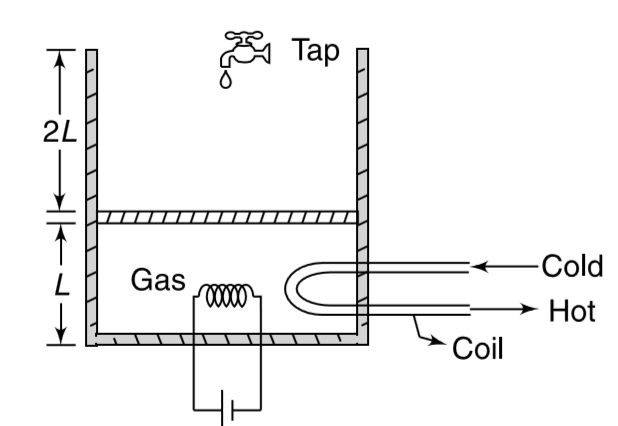 View Solution
View SolutionTwo uniform cylinders, each of mass m=10 kg and radius r = 150 mm, are connected by a rough belt as shown. If the system is released from rest, determine
the velocity of the centre of cylinder A after it has moved through 1.2 m &
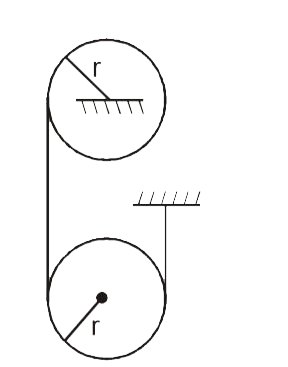 View Solution
View SolutionFigure shows (only cross section) a wooden cylinder C with a mass m of 0.25kg,a radius R and a length l perpenducular to the plane of paper of 0.1meter with N=10 where N is number of turns of wire loop contains the axis of the cylinder the least current through the loop is P2A that will prevent the cylinder from moving down a plane whose surface is inclined at angle θ to the horizontal, in the presence of a vertical field of magnetic induction 0.5weber/meter2, if the planer of the windings is parallel to the inclinded plane?(bottom most point of cylinder does not slip)then find value of P.
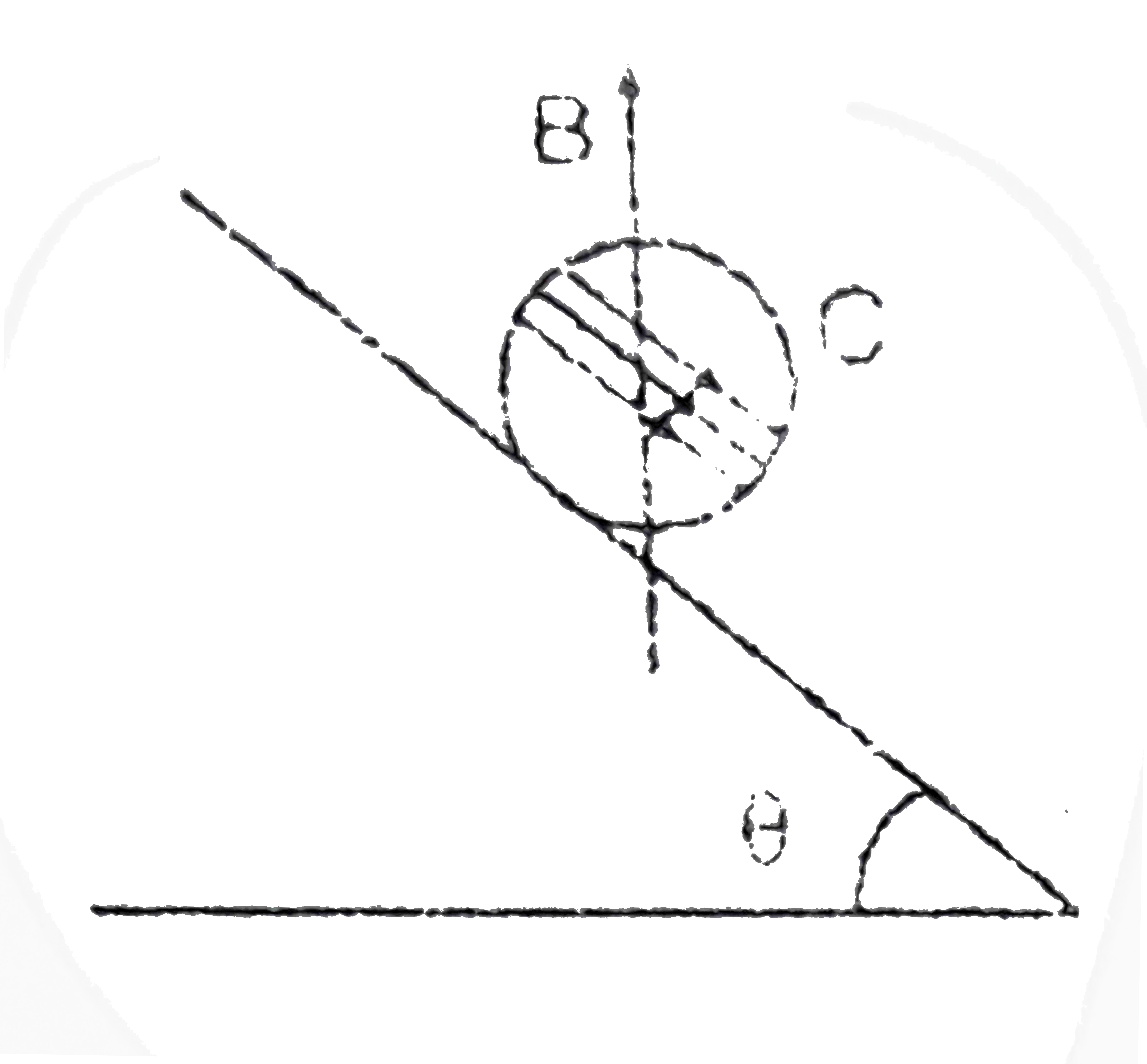 View Solution
View Solution

